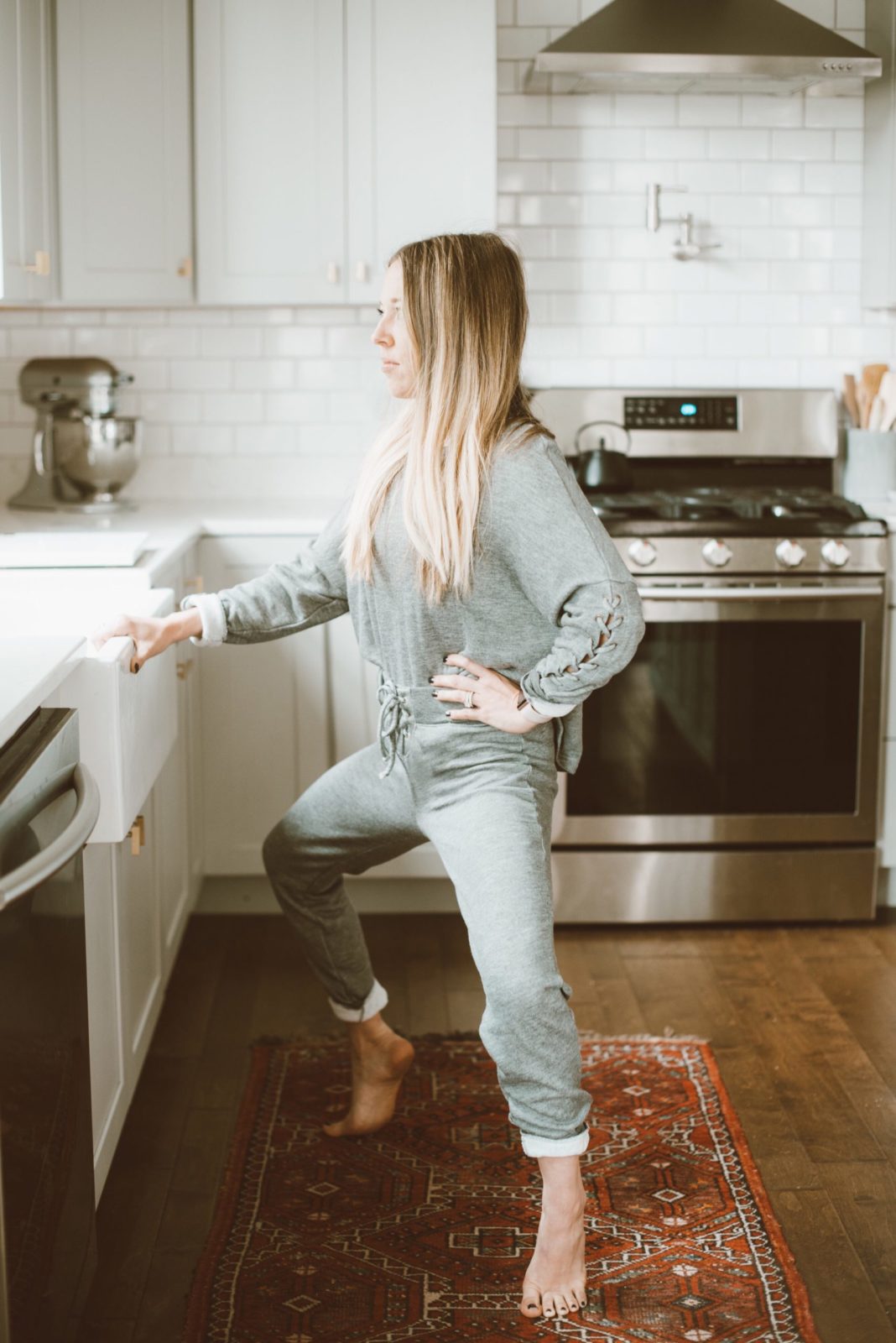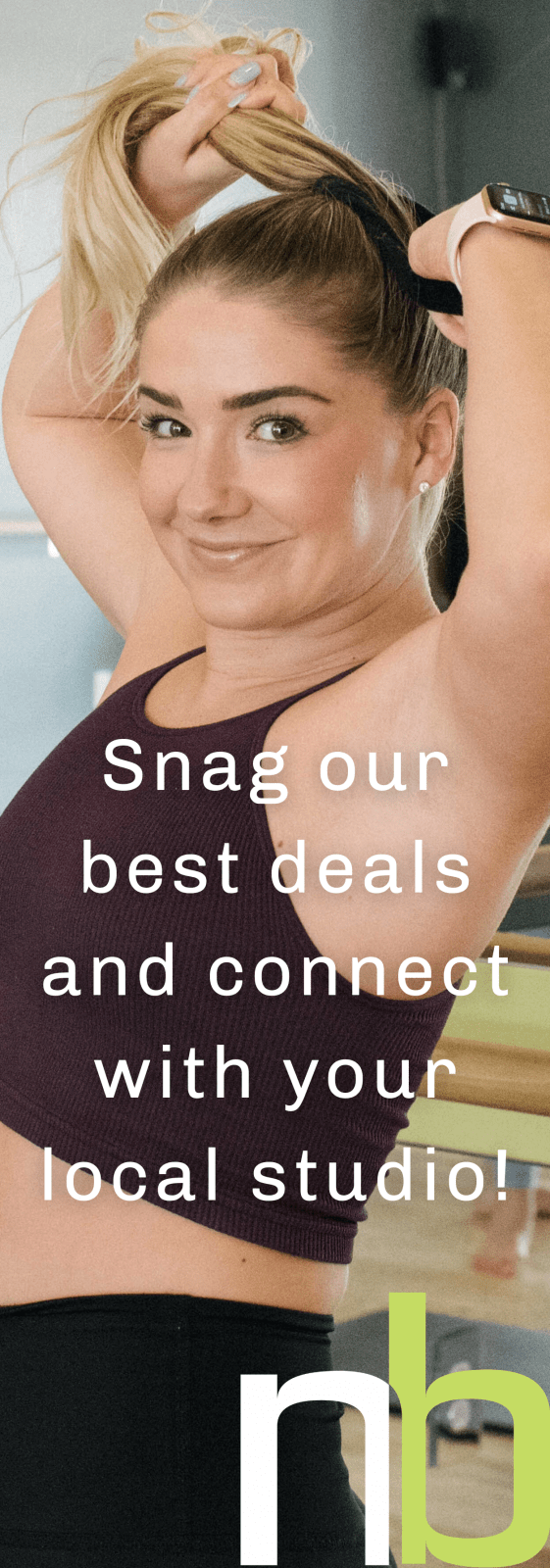We are in the thick of it – day 16, roughly half-way, of our 28 day challenge. A challenge that only requires 10 minutes give or take of daily movement. There was intent behind this challenge, dare we say a strategy?! But honestly, the science is simple. In order to build a new habit, create momentum and change your lifestyle long-term, you need to start small. What does small do exactly?
Small is in our bloodstream. Small (isometric) exercises build real muscle tone here. Small, repetitive changes, add up to real results here! It’s what we’re all about at NEIGHBORHOOD barre. So why not approach that philosophy to other areas of our lives? And how does something so small really add up to something so big?
Because you’re taking action. We can educate ourselves until we’re blue in the face. We can buy the 2021 calendar, make plans, and talk and talk, and listen and listen, all about the subjects of our goals. But until we’re putting one foot in front of the other, it remains a dream. We’re not asking for perfectionism, we’re asking for a-c-t-i-o-n. And no action is too small, my friends.
Action comes before motivation. Truly! We are rarely motivated to do something, until we’re already in the action of doing it. But the action must be small. If it’s not a 9/10 on your scale of getting it done, every day, then it’s too big. A tiny action helps us bust out of procrastination and “feeling stuck”. Taking small actions create momentum. And momentum builds confidence, achievement, success (you are actually doing what you set out to do – very important!) and ultimately drive.

So let’s break down 5 ways to ditch perfectionism and build sustainable lifestyle habits that actually stick!
1) Keep it simple. No, like even simpler than what you are thinking. Creating a new habit or making a change always begins with the easiest and simplest step, at the lowest level. Ask yourself “On a scale of 1 to 10, how confident am I that I can do this practice every single day for the next two weeks, no matter what?” If that action isn’t answered as a 9 or 10/10 by you, then you need to simplify. This is why we started with 5 – 15 minute daily workouts in January. Do we eventually want you to work out longer? Yes. Should we start there? No. Jumping straight to the end creates confusion, burnout, can backfire and you end up worse than you began, or most likely – you quit. Start smaller than you want, just so you actually start, and then slowly build up from there. Consistent, quality action is what creates and retains a habit. You should be able to do that one action repeatedly and well, before you move on to a new action. You should be winning at every stage, able to complete each task with mastery and ease, before you ever move on. Your process should eventually be bulletproof, and your results will show it.
2) Keep it sequential. Create a step-by-step plan for yourself. We’re starting with roughly 10 minutes of movement a day for 28 days. How does that feel for you so far? Are you making it happen every day? If not, simplify. Instead of pushing yourself to move 7 days a week, start with 3 days a week. Do that for two weeks, then try 4 days a week for the next two weeks. Same thing for those of you who are feeling great and consistently nailing 10 minutes of daily movement. Could you do the same workout twice (ie 20 minutes), two days a week next? Write out your step-by-step plan, in two-week increments. You need to perform one habit consistently first, before you take on something else. Start by writing a 3 step plan. Then take your first step and break that down into 3 steps. Repeat with your original step 2 and step 3, so you now have a total of 9 steps. Don’t go out of order! Complete each step – slowly, consistently, habitually. Create rituals and routines around each step.
3) Keep it segmented. We tend to want to make all the changes, all at once. This is simply not how our brains work. Contrary to popular opinion, your brain actually canNOT multitask! Say for example you wanted to change your diet. If you try to make several changes at once – say start intermittent fasting, while going keto, and cut your calories by 30% – you will feel horrible and you won’t stick with this plan. Again, you want to really, really simplify. Creating rituals around what you want to change is also, well, life changing. If you want to start intermittent fasting, before you ever started restricting the timeframe around what you eat, you should actually start with eating slowly and mindfully to begin to recognize physical signs of satiety.
Learn when your body is actually full (feeling between 70 – 80% full is actually when you should stop eating), will help you to listen to your body’s satiety signals. So your first action may be to eat without any distractions (meaning put the phone down, turn off the tv, shut down the laptop) so you’re completely mindful and focused on what you’re eating. The second action may be to put your fork down in-between bites, so you slow down the pace at which you’re eating. If you’re too rushed, you may not be able to recognize the physical satiety cues from your body. The third action may be to make a food journal of every single thing you eat and drink for three days. This will give you an idea of your current eating window. These are three actions, before the actual action of potentially adjusting your eating window. Every link in the behavior chain should be solid, and complete.

4) Check in. Change is hard, and that’s ok. In order to make a change, you have to be 1) ready (you’re prepared and have the right conditions in play), 2) willing (how receptive you are to tasks, guidance, and taking action), 3) able (can you actually DO the things you’re asking? Can you train for a marathon in 8 weeks if you’ve never run a mile – no!). You may feel ready, willing and able today, but not tomorrow. And that is A-OK. Ask yourself, how are you feeling today? Intuitively listen and be honest – usually our worst critic is ourselves. If you’re not ready to take a step forward, then give yourself grace to stay where you’re at another day or two, or give yourself permission to take a step back! If you stopped completely, do not judge. Simply start back at step one (notice we did not say where you left off. Start back at the beginning, even if you’re able to progress through each step quicker this time. Begin (again), at the beginning!
Progress is not linear. ANY change will naturally involve some resistance. We are creatures of habit and a change in routine can challenge your identity, the status quo, confront the unknown, and more. But the more you can name and address your resistance, the more digestible change becomes. Treat your worries, fears, and ‘failures’ as a valid, legitimate part of the process. These feelings won’t just go away, so treat them as “competing commitments”. You’re not sabotaging your success if you miss one workout because you have a sick family member, or long work day, or you didn’t sleep great and can’t fathom doing anything but napping. These are valid, real-life scenarios that are simply competing for your time and attention. It will always be there. If you focus on “problems,” it often worsens your self-sabotage and increases resistance to change. Instead focus on what is going good.
Look for any evidence of what is going well. Maybe you didn’t get in a 10 minute official workout, but you were on your feet most of the day, instead of sitting down on Zoom calls. That IS movement. Reframe your roadblocks. Tell a different story about why you aren’t making the change. Do you not have enough tools, or the right tools, to make the change? Is relaxing and scrolling on your phone instead of exercising a “stress coping mechanism”? Is your diversion or resistance an automatic response to fear or anxiety? Do any of these new frames change your perspective? Here’s another way to explore resistance:
Try the “downward arrow” technique. Just as you’ve probably heard about the “5 why’s” to find your deeper purpose or real motivation for a goal, use this in reverse for resistance. Start with a statement about your resistance; then get curious and ask “why” after each response, 5 times. Above all, remember your goals should always involve both appropriate progression (when to make things harder) AND appropriate regression (aka when to make things easier).
5) Stay supported. Change takes a bio-psycho-social approach. The biological nature of your body, the psychological expression of your emotions and mindset, and the environment and support system immediately around you. Lasting change needs to be supported by deep health (a whole person, whole life approach to health). So are you considering your environment; your friends, family and co-workers; and your access to the right tools and resources as part of your success? Share both the highs and lows with someone you know you can trust and makes you feel authentic and validated. This could be a friend or family member, or it could be someone who shares the same goal(s) as you that can relate to what you are going through right now.
Feeling supported with a sense of belonging is crucial to your success. We are social beings who crave connection, and going for change alone feels next to impossible. When it comes to health, nutrition or exercise, your friends or family could even be potential triggers or inadvertently sabotage your efforts. How do your relationships (family, friends, co-workers) affect your health, wellbeing and choices? Make your environment part of your planning, and do your best to have the right people, tools and places surrounding you. If you haven’t already, make sure to join our
collective Facebook group here. We are here to coach you, empathize with you, practice what we preach with you, and of course throw in a little humor now and again. 😉
The science is simple. The more consistent you are, no matter how small the step, the better your results. Any change, no matter how small, creates at least some positive effect…often larger than expected.




